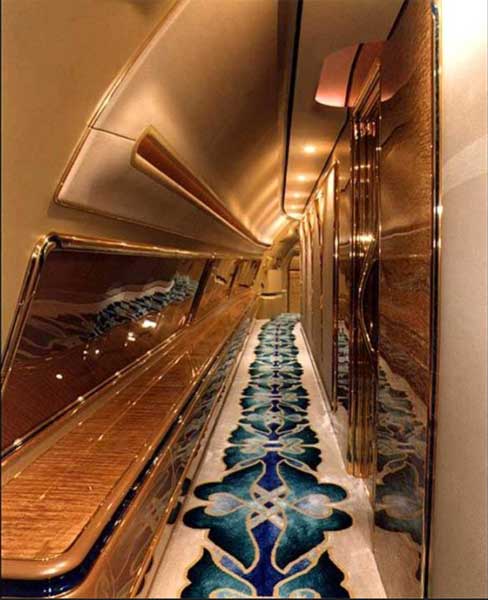
Tom Powers got into woodworking originally as the result of an overheard conversation. While working as a dishwasher at a greasy spoon restaurant in Oregon, “I overheard a guy tricking to pick up waitresses by offering them a job in his brother’s cabinet shop,” Tom said. He dried off his hands, walked to the front and said, “Hey, I’d like a job.”
At that point in his life, Tom said, “I didn’t think I was good with my hands, but I couldn’t find a job that was reading and thinking and be able to pay the rent.” At the cabinet shop, to which he commuted 14 miles by bicycle, he learned “how to work hard and do millwork,” specifically pressing lumber into S4S material.
That was the start of Tom’s 30-some-odd year career of “making things.” What kinds of things? Well, a variety.
“I did lots of doors in Santa Barbara, and worked out of my garage for a while,” Tom said, as well as a lot of other things, “I guess I get bored easily,” he said.
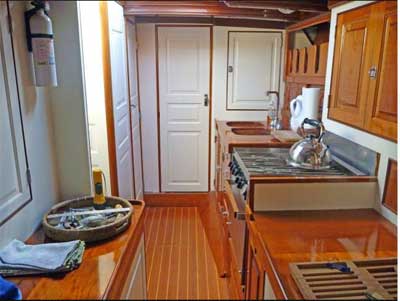
For instance, one of Tom’s projects was the restoration of a 60-foot schooner yacht, originally launched in 1925, which had experienced a fire. “I was the only one dumb enough to take on the job,” Tom said. “Everything you see in the pictures was charcoal, and she was on water so she was rocking all the time.” In order to find the center point for his work, Tom spent time sitting on the dock watching the boat swing back and forth in the waves, and marking the outside point of the pendulum.
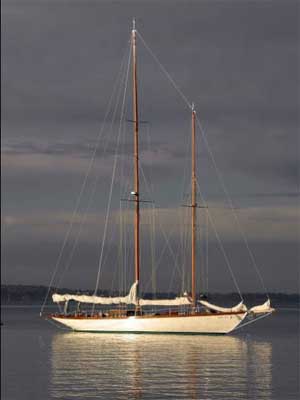
At the end of the six-month restoration, though, he said he was sitting in the salon with the owner, who told him he couldn’t really tell the difference between Tom’s work and the original boat. “That was a big compliment for me.”
He also did some work on jet aircraft, specifically private 737s, and he spent about 10 years working on various improvisations with a group at the Pacific Science Center. “We made objects that taught ideas,” Tom said. “I enjoyed working with other people; I’ve done a lot of teamwork kind of things.”
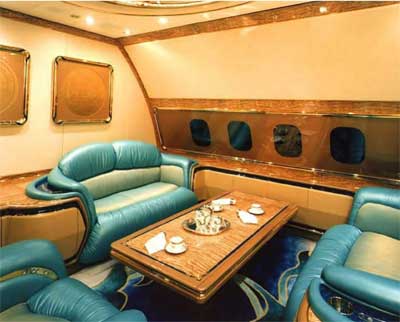
Among those things at the Pacific Science Center were building a giant tic-tac-toe playing robot, as well as a “viscosity race.” A rack held four tubes of different viscosities of silicone oil; when you flipped the rack upside down, you watched four pool balls (numbered 1 through 4) descend through the various viscosities at different rates of speed.
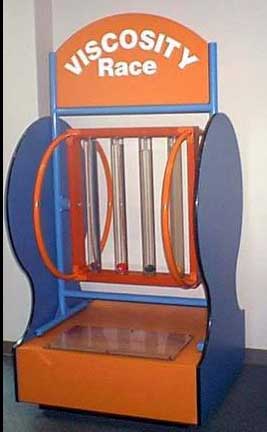
Also at the Science Center, Tom worked on the Chair of Illusion for a Halloween exhibit. A mirror at a 45 degree angle is placed in front of the chair, whose upholstery has straight vertical lines to create the illusion of continuity. Placing your head on a scimitar-shaped plywood platform mounted on the arms of the chair creates the illusion that the head is floating in space. “That chair mostly came out of conversations,” Tom said. “I think I made it in a day.”
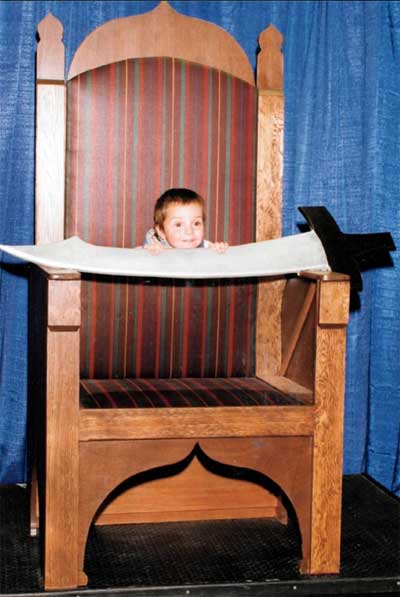
Among all the other things, Tom said, “I used to say I couldn’t call myself a furniture maker unless I cranked out some furniture every so often.” He built a cradle and hope chest for his stepdaughter and is currently working on a raised garden for his own deck.
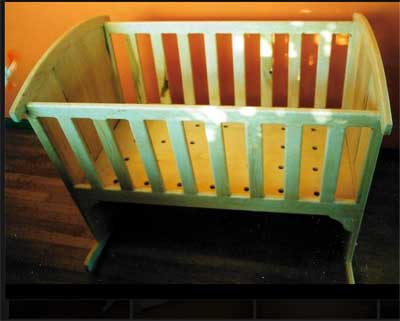
While Tom admits to a fondness for Honduran mahogany because it carves nicely and responds well to tools, he also says that, when he was doing art and sculpture – much of it temporary – in between other projects, “People used to ask me what material I used. I said ‘Anything that would hold still.’”
Eventually, though, with all of these activities, Tom said that as he used his body as a tool set, it began to wear out. He went back to school in his 50s and studied AutoCAD, bringing an understanding of different materials into the process. “Bringing aesthetics into drafting, that’s what I enjoy,” he said.
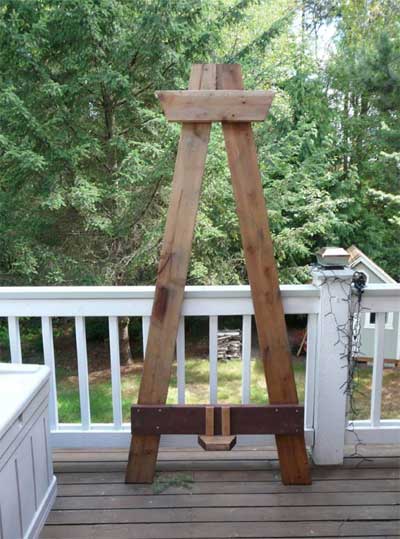
As an example of using his body as a toolset, Tom noted that he happens to have a hand span of 8 inches, and has used that to his advantage in layout techniques. “One hand span is 8 inches; two hand spans is 16 inches.” Despite his interest in computers and drafting, he also appreciates more ancient techniques, citing plumb bobs and water levels as a couple of his favorite tools. “The only things I really trust are water and gravity,” he said.
Now semi-retired, Tom said that although he’s not actively looking for work, it still comes to him, with his most recent project being a Craftsman style remodel. He’s also making a walking stick for his cousin out of an old Christmas tree. “I currently do a lot of upcycling of materials; they’re basically art objects,” Tom said.
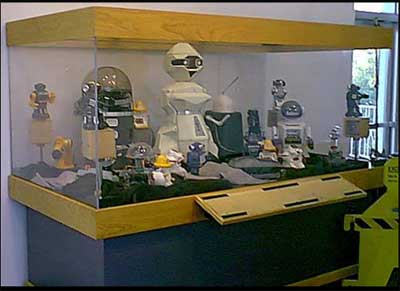
With an interest over the past few years in 3D printing – his cat litter scoop “was born out of necessity,” Tom says – he sees a relationship between these types of art objects and increasing computerization. Currently, with 3D printers, “Sometimes to get something printed is ridiculously expensive, but I expect that’ll change as we go forward. There’s going to be very few opportunities for humans to do much work at all other than ‘making walking sticks out of Christmas trees’ as the robot overlords take over.”





